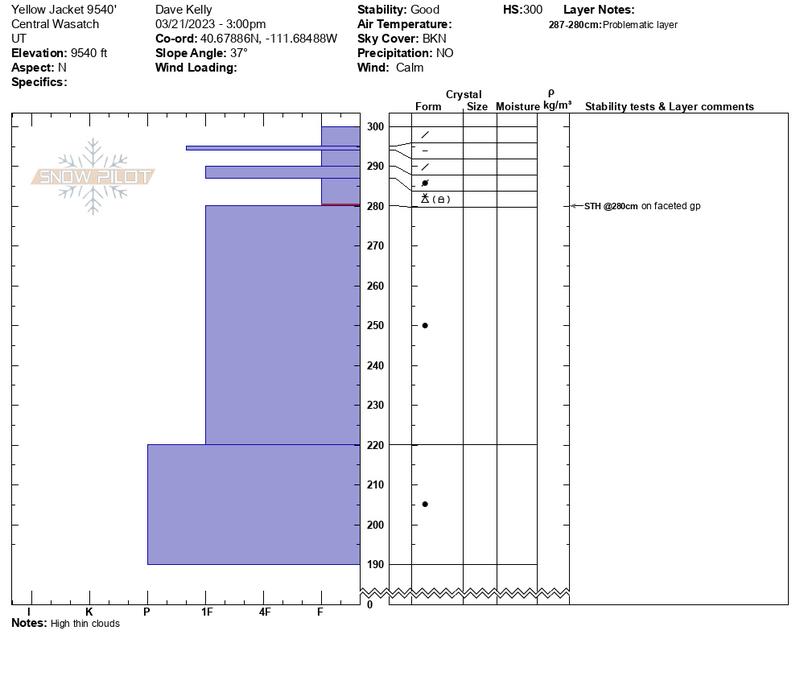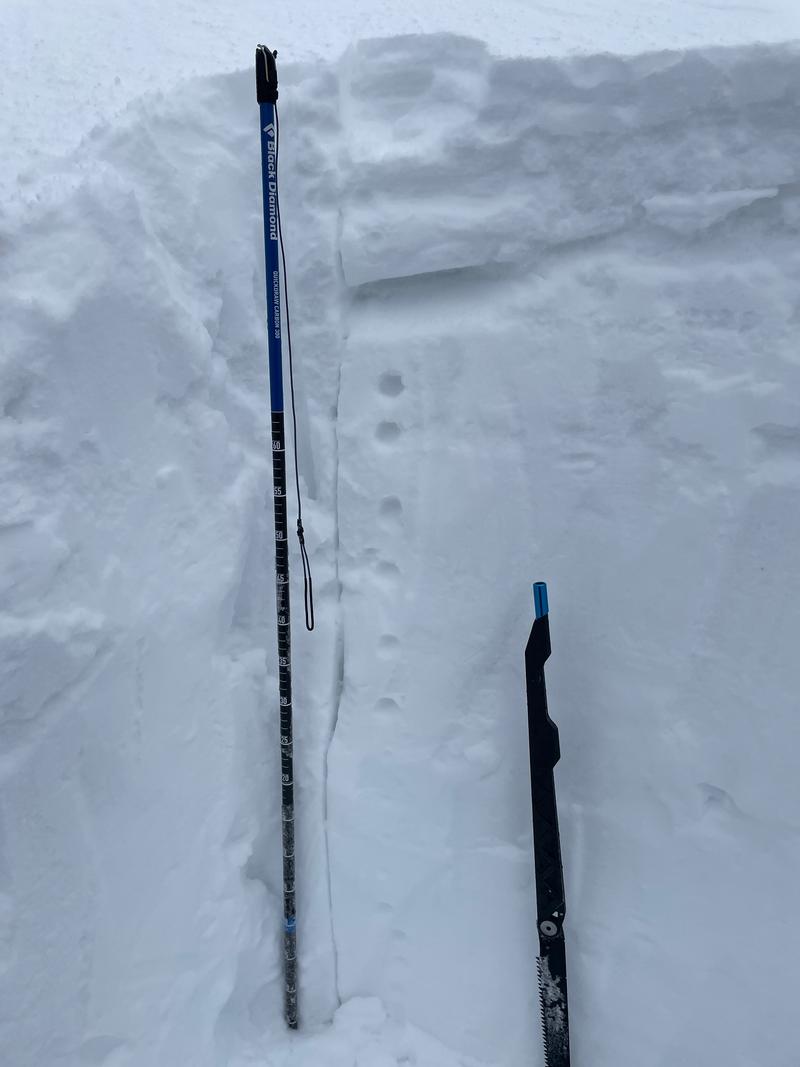Observation Date
3/21/2023
Observer Name
Meisenheimer / Kelly
Region
Salt Lake » Big Cottonwood Canyon » Mill Creek Canyon » Mill A » Butler Fork » Gobblers
Location Name or Route
Butler Fork to Cabin Run to Alexander Basin
Comments
2 snowpits one on an east facing slope (above photo) and one on a north facing slope (below photos). Similarities were that both pits had weaknesses in the upper foot of the snowpack. Both had failures on layers of faceted graupel. This layer of graupel will most likely heal. The layer of concern was closer to the surface and we believe was the cause of the avalanche we observed in Depth Hoar Bowl. Warm temperatures this afternoon should prevent these layers from being of further concern with new snow loading over the next few days.


Once we hit an elevation of about 8,200,' we hit mank wet snow. The snow (even in the north) took in a lot of heat from there. Many drips off the trees made me wonder why I didn't have skin wax. Tomorrow there will be lots of crust on almost all aspects except for mid and upper-elevation north-facing slopes.



Today's Observed Danger Rating
Low
Tomorrows Estimated Danger Rating
None
Coordinates






